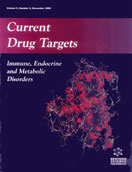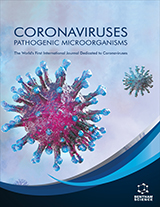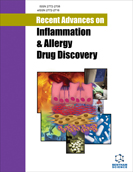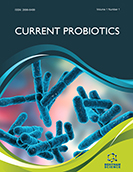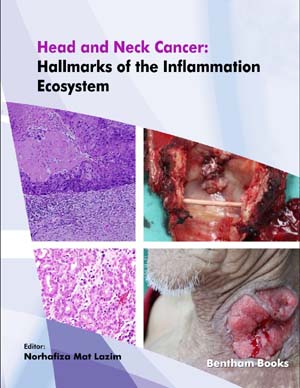Abstract
We previously reported that surface-linked liposomal antigen induced IgEselective unresponsiveness. The results were consistent even when different coupling procedures for antigen with liposomes, or for liposomes with different lipid components, were employed. During the course of an investigation intended to clarify the mechanism of IgE-selective unresponsiveness induced by surface-coupled liposomal antigens, we discovered an alternative approach to regulate the production of IgE, one that is independent of the activity of T-cells. Immunization of mice with OVA-liposome conjugates induced IgE- selective unresponsiveness without apparent Th1 polarization. Neither interleukin-12 (IL-12), IL-10, nor CD8+ T-cells participated in the regulation. Further, CD4+ T-cells of mice immunized with OVA-liposome were capable of inducing antigen-specific IgE synthesis in athymic nude mice immunized with alum-adsorbed OVA. On the other hand, immunization of the recipient mice with OVAliposome did not induce anti-OVA IgE production, even when CD4+ T-cells of mice immunized with alumadsorbed OVA were transferred. In the secondary immune response, OVA-liposome enhanced anti-OVA IgG antibody production but not the ongoing IgE production, suggesting that the IgE-selective unresponsiveness induced by the liposomal antigen involved direct effects on IgE but not IgG switching in vivo. These results suggest the role of an alternative mechanism, one not involving T-cells, in the regulation of IgE synthesis, and raise the possibility that surface-linked liposomal antigen is potentially applicable for the development of a novel vaccine that induces the least IgE synthesis. Moreover, given the relatively low allergic response to and increased antigenicity of the allergen, this form of antigen preparation would be applicable to allergen immunotherapy.
Current Drug Targets - Immune, Endocrine & Metabolic Disorders
Title: Surface-Linked Liposomal Antigen Induces IgE Selective Unresponsiveness in a T-Cell Independent Fashion
Volume: 3 Issue: 2
Author(s): Tetsuya Uchida
Affiliation:
Keywords: liposome, Ige, vaccine, allergy
Abstract: We previously reported that surface-linked liposomal antigen induced IgEselective unresponsiveness. The results were consistent even when different coupling procedures for antigen with liposomes, or for liposomes with different lipid components, were employed. During the course of an investigation intended to clarify the mechanism of IgE-selective unresponsiveness induced by surface-coupled liposomal antigens, we discovered an alternative approach to regulate the production of IgE, one that is independent of the activity of T-cells. Immunization of mice with OVA-liposome conjugates induced IgE- selective unresponsiveness without apparent Th1 polarization. Neither interleukin-12 (IL-12), IL-10, nor CD8+ T-cells participated in the regulation. Further, CD4+ T-cells of mice immunized with OVA-liposome were capable of inducing antigen-specific IgE synthesis in athymic nude mice immunized with alum-adsorbed OVA. On the other hand, immunization of the recipient mice with OVAliposome did not induce anti-OVA IgE production, even when CD4+ T-cells of mice immunized with alumadsorbed OVA were transferred. In the secondary immune response, OVA-liposome enhanced anti-OVA IgG antibody production but not the ongoing IgE production, suggesting that the IgE-selective unresponsiveness induced by the liposomal antigen involved direct effects on IgE but not IgG switching in vivo. These results suggest the role of an alternative mechanism, one not involving T-cells, in the regulation of IgE synthesis, and raise the possibility that surface-linked liposomal antigen is potentially applicable for the development of a novel vaccine that induces the least IgE synthesis. Moreover, given the relatively low allergic response to and increased antigenicity of the allergen, this form of antigen preparation would be applicable to allergen immunotherapy.
Export Options
About this article
Cite this article as:
Uchida Tetsuya, Surface-Linked Liposomal Antigen Induces IgE Selective Unresponsiveness in a T-Cell Independent Fashion, Current Drug Targets - Immune, Endocrine & Metabolic Disorders 2003; 3 (2) . https://dx.doi.org/10.2174/1568005310303020119
| DOI https://dx.doi.org/10.2174/1568005310303020119 |
Print ISSN 1568-0088 |
| Publisher Name Bentham Science Publisher |
Online ISSN 1875-5917 |
Related Articles
-
Attenuated D2 16681-PDK53 Vaccine: Defining Humoral and Cell- Mediated Immunity
Current Pharmaceutical Design Lung Remodeling in Interstitial Pneumonia: A New Molecular Target of Pulmonary Fibrosis
Current Respiratory Medicine Reviews Myelodysplastic/Myeloproliferative Neoplasms
Current Cancer Therapy Reviews Hypoxia, Lead Toxicities and Oxidative Stress: Cell Signaling, Molecular Interactions and Antioxidant (Vitamin C) Defense
Current Signal Transduction Therapy The Endocannabinoid System in Ageing: A New Target for Drug Development
Current Drug Targets Neuropsychological Effects of Mercury Exposure Among Dentists in Monastir City
Recent Patents on Inflammation & Allergy Drug Discovery TGF-Beta Signaling Manipulation as Potential Therapy for IBD
Current Drug Targets The Therapeutic Potential of Adenosine Triphosphate as an Immune Modulator in the Treatment of HIV/AIDS: A Combination Approach with HAART
Current HIV Research Reversion of Multidrug Resistance in Tumor By Biocompatible Nanomaterials
Mini-Reviews in Medicinal Chemistry Beta Caryophyllene and Caryophyllene Oxide, Isolated from Aegle Marmelos, as the Potent Anti-inflammatory Agents against Lymphoma and Neuroblastoma Cells
Anti-Inflammatory & Anti-Allergy Agents in Medicinal Chemistry The Co-Existence of NASH and Chronic Kidney Disease Boosts Cardiovascular Risk: Are there any Common Therapeutic Options?
Current Vascular Pharmacology Osteoprotegerin in Cardiovascular Disease: Ally or Enemy?
Current Pharmaceutical Design Future Treatment for COPD: Targeting Oxidative Stress and its Related Signal
Recent Patents on Inflammation & Allergy Drug Discovery Regulation of Inflammation and Myocardial Fibrosis in Experimental Autoimmune Myocarditis
Inflammation & Allergy - Drug Targets (Discontinued) On the Diversity of Oxidative Bioactivation Reactions on Nitrogen- Containing Xenobiotics
Current Drug Metabolism Roles of Renal Proximal Tubule Transport in the Pathogenesis of Hypertension
Current Hypertension Reviews Non-pigmenting Fixed Drug Eruption: An Unusual Adverse Reaction to Aceclofenac
Current Drug Safety Regulation and Function of Rankl in Arterial Calcification
Current Pharmaceutical Design Interferon-Alpha in the Treatment of Philadelphia-Negative Chronic Myeloproliferative Neoplasms. Status and Perspectives
Current Drug Targets Synthesis of Phenyl-substituted Amides with Antioxidant and Antiinflammatory activity as Novel Lipoxygenase Inhibitors
Medicinal Chemistry


